AI assistants like ChatGPT, Gemini, and Perplexity have become the new places people turn to for answers—handling millions of prompts every day. Even Google now uses AI to generate summaries right at the top of search results.
This shift happened fast. In 2024, AI Overviews rolled out to millions of searches, ChatGPT climbed into the top ranks of global websites, and the once-reliable #1 Google spot began losing a third of its clicks. Suddenly, SEO wasn’t just about rankings anymore.
Some marketers panicked, others brushed it off. But AI has changed how people discover brands and where visibility happens.
This isn’t the end of SEO, it’s the next chapter. The fundamentals still matter, but the strategy needs to evolve.
So, here’s what’s changed, what hasn’t, and how to stay visible in the age of AI search.

At first glance, being cited within an AI Overview might seem like a win, but the data tells a different story. A Pew Research Center study found that 99% of users who see an AI Overview don’t click any of the cited sources, and 26% close their browser entirely after reading the summary.
In contrast, about 8% of users click results in the traditional organic listings directly below the overview, meaning you may actually drive more traffic from those standard rankings than from being featured in the AI box itself.
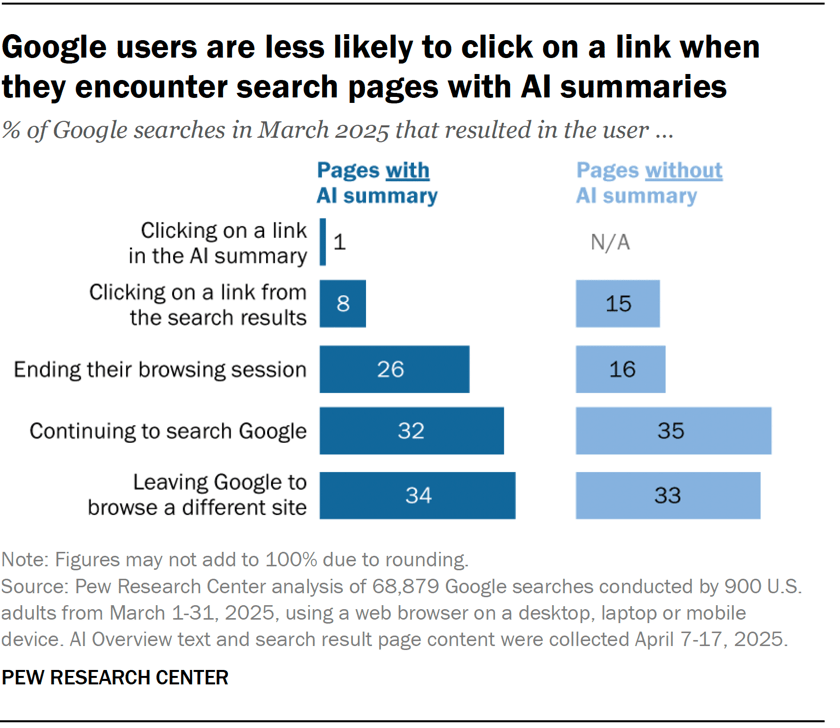
All of this compounds the growing zero-click search trend. Over half of all Google searches already ended without a single site visit in 2024, and AI Overviews are only accelerating that shift. Users who do click through tend to be more motivated, but overall discovery is increasingly happening on the results page itself—not on websites.
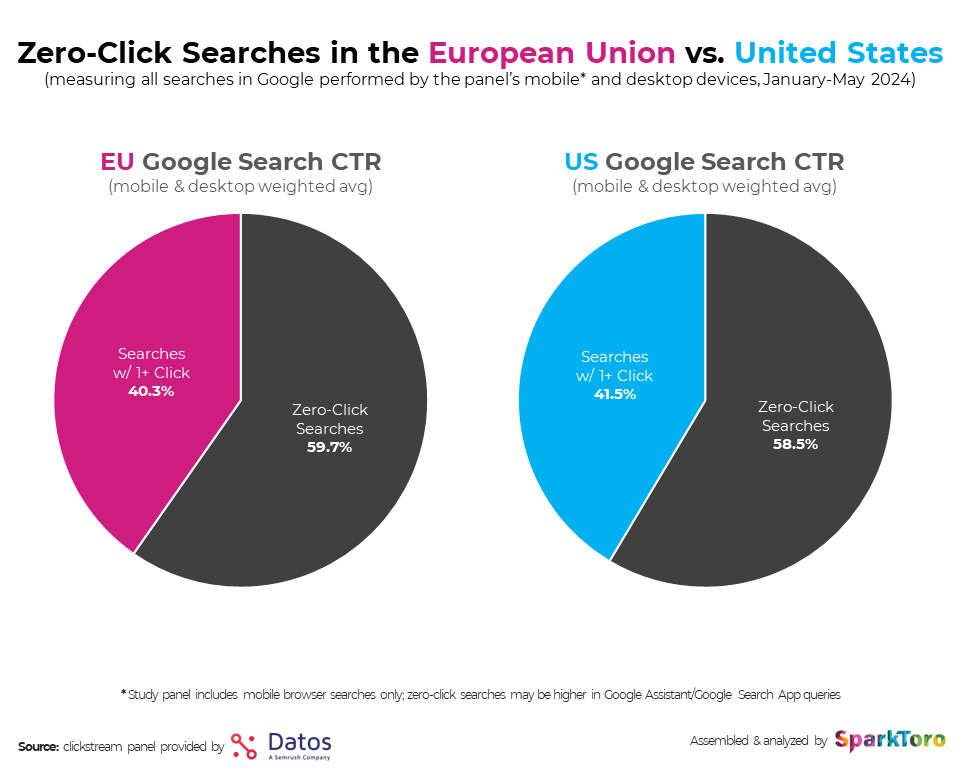
Further reading
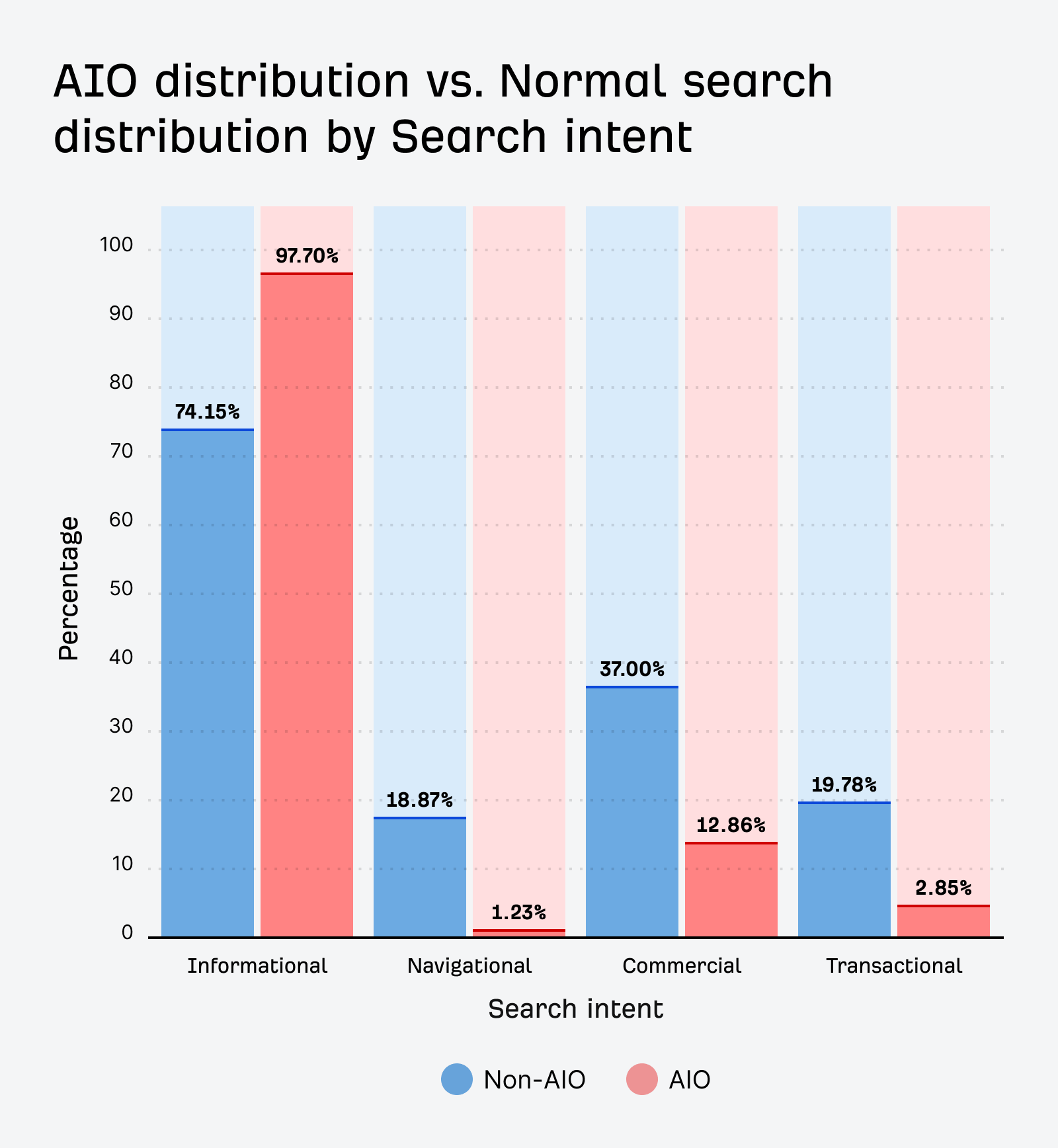
Searches that show clear buying intent or mention specific brands are less influenced by AI. Whether in Google’s AI Overviews, AI Mode, or within large language models (LLMs), when users already know what they want to buy or which brand they prefer, AI tools usually display traditional search results instead of summarizing or replacing them.
A recent study by Kevin Indig, which analyzed 250 search tasks, found that Google’s AI Mode has an almost 100% zero-click rate. Users are now discovering products, comparing options, and forming opinions entirely within the AI interface—only clicking through when they’re ready to make a purchase.
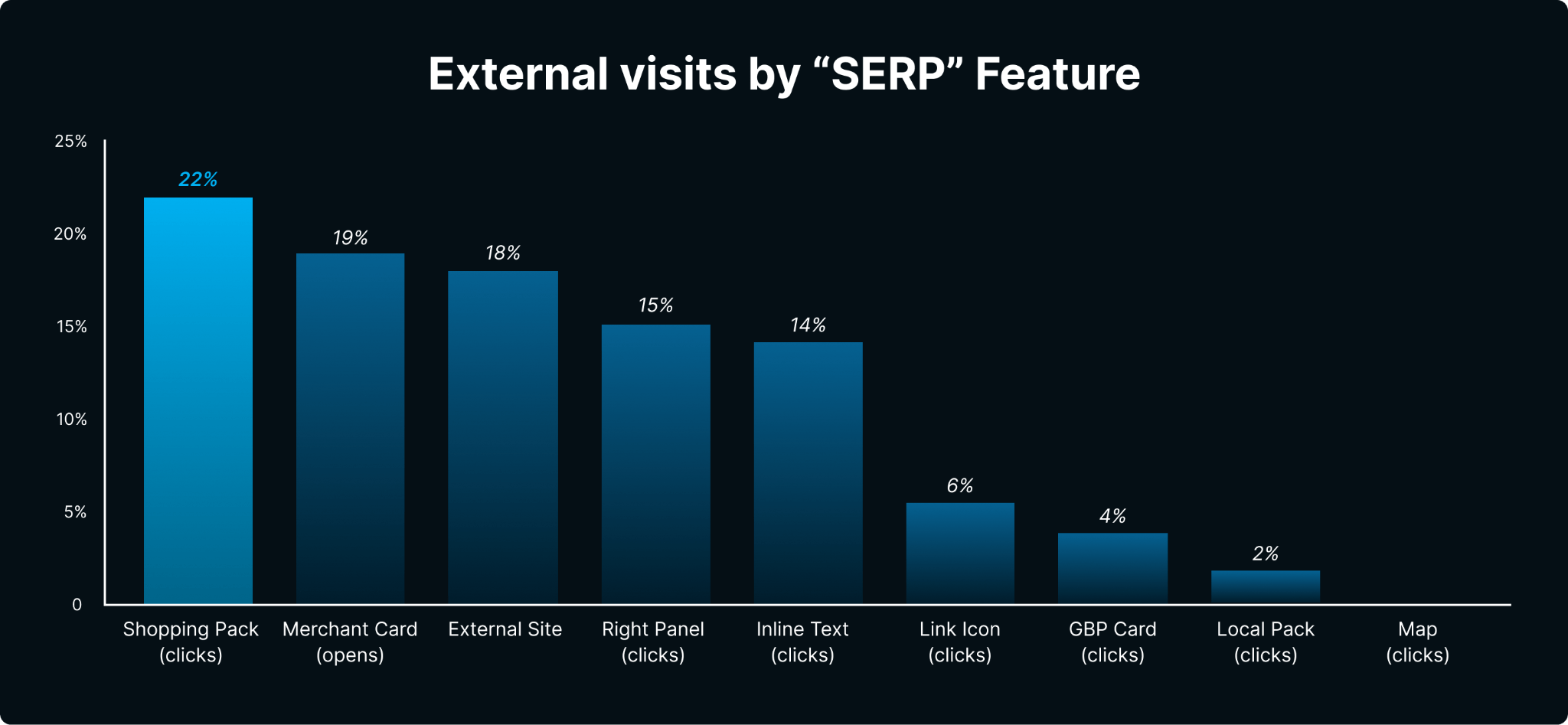
In other words, AI Mode consumes all top-of-funnel and middle-of-funnel activity, reserving clicks exclusively for transactions.

But another analysis by Amsive found that this can’t be extrapolated to all industry verticals.

While related terms like AEO (Answer Engine Optimization) or LLMO (Large Language Model Optimization) are sometimes used, the idea is the same: ensuring your brand is visible, cited, and accurately represented within AI-generated answers.
For marketers, this represents a new “battleground” for visibility—one where AI assistants, not just search engines, influence consumer decisions. Some brands are surfaced and recommended as trusted authorities, while others are simply left out of the conversation.
That doesn’t mean GEO replaces SEO. In fact, it builds on the same foundation. The difference lies in where and how visibility happens. Search and AI results draw from similar content pools, but how they surface and summarize that content can vary dramatically.
To earn mentions and citations in AI-generated answers, marketers will need to adapt familiar tactics—not invent entirely new ones. Strategies like influencer marketing, reputation management, and structured, semantically clear content are seeing a resurgence.
[note]
A citation is when an AI attributes information to your content and includes a link to your site—usually for data, stats, or how-to content.
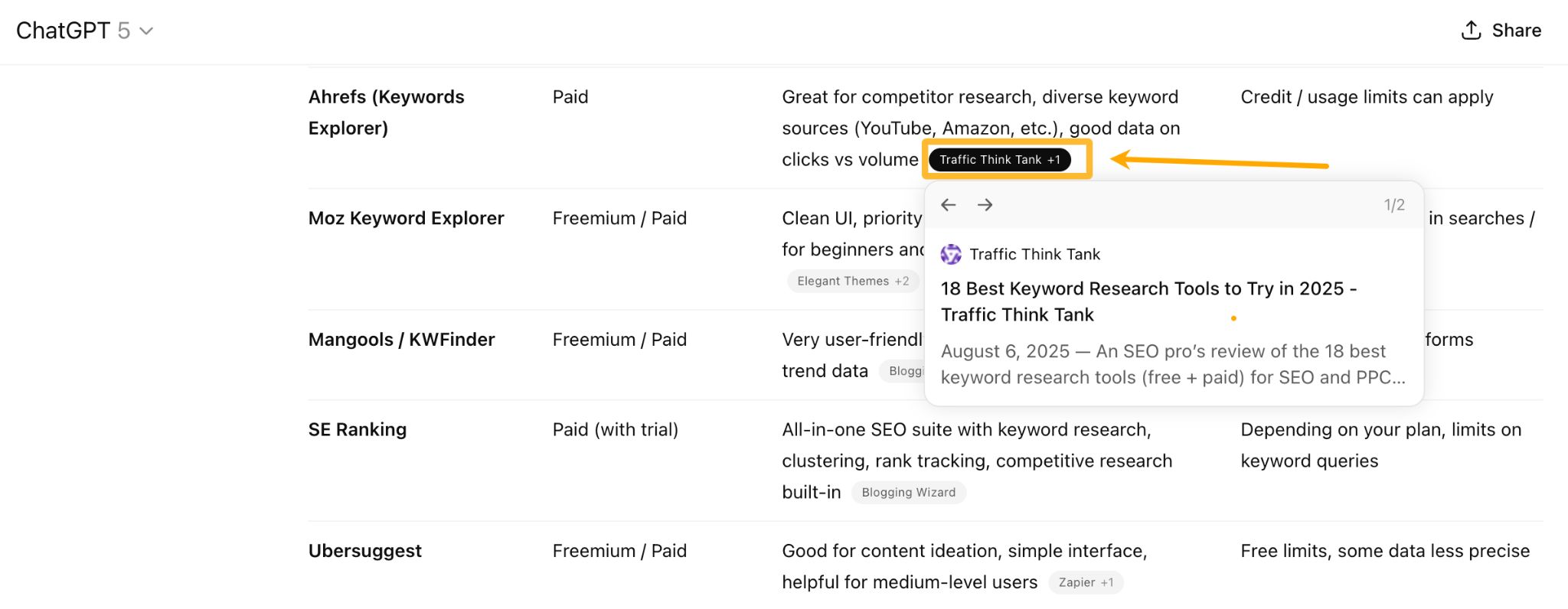
A mention is when your brand or product name appears in an AI-generated answer without a link, often in product recommendations.
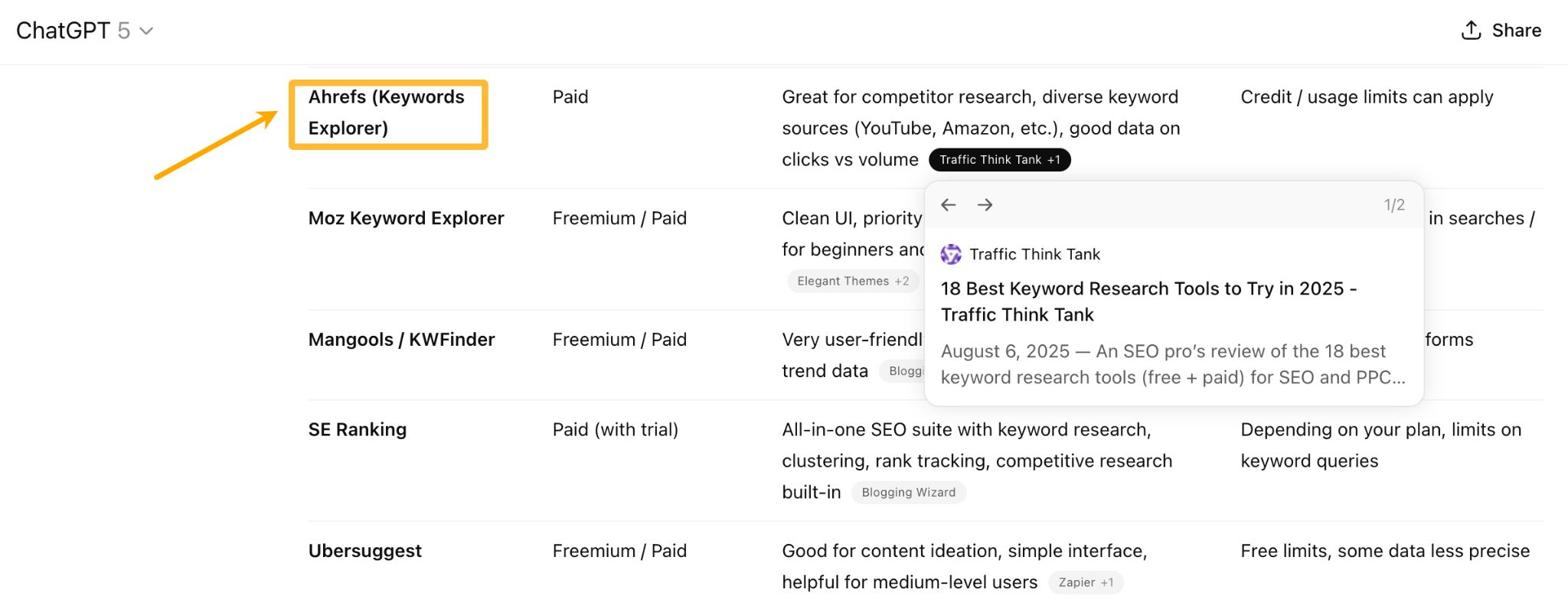
Further reading
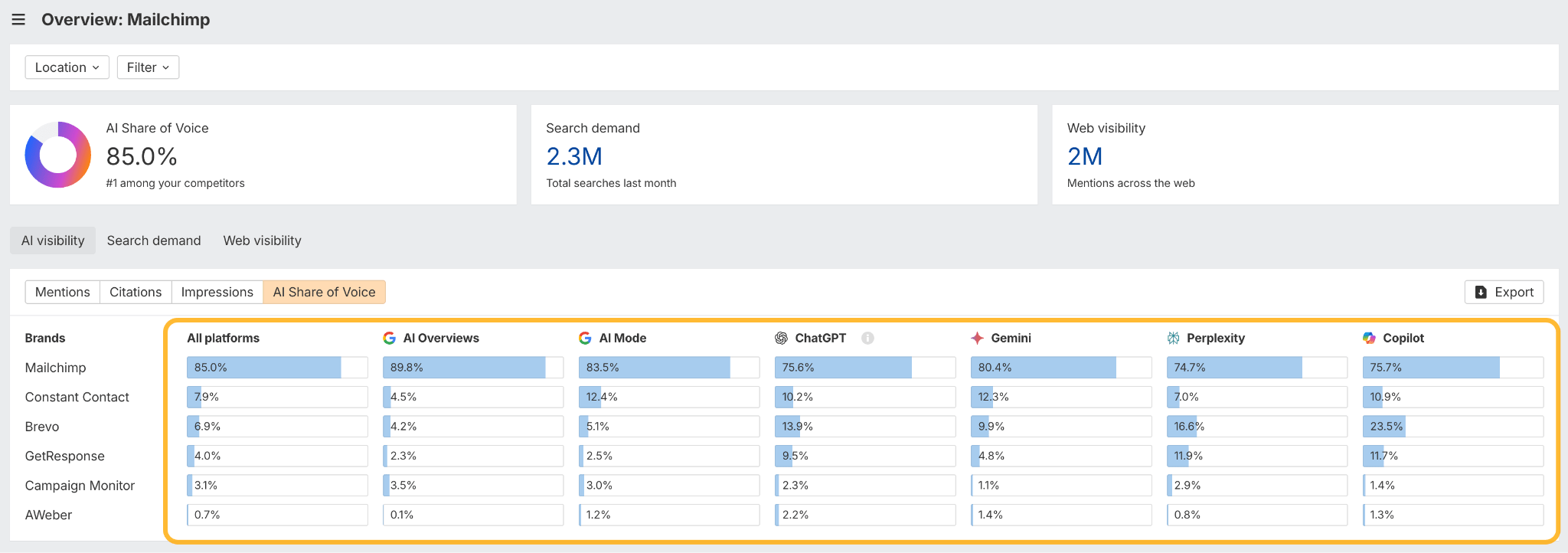
And show the topics you miss out on so you can create new content for them and/or contact cited sites to feature you, so you can boost your AI visibility.

Further reading
Agencies and consultants rushed to offer GEO services, sometimes before fully understanding what it actually meant. It feels a lot like the early SEO days: plenty of hype, scattered experimentation, and very little consensus on what really works.
For example, for months, the main conversation on LinkedIn about LLMs and AI Overviews was that they were taking away website traffic. But more recently, I’ve started seeing the opposite perspective emerge, showing that AI referral traffic and organic search can actually grow together.
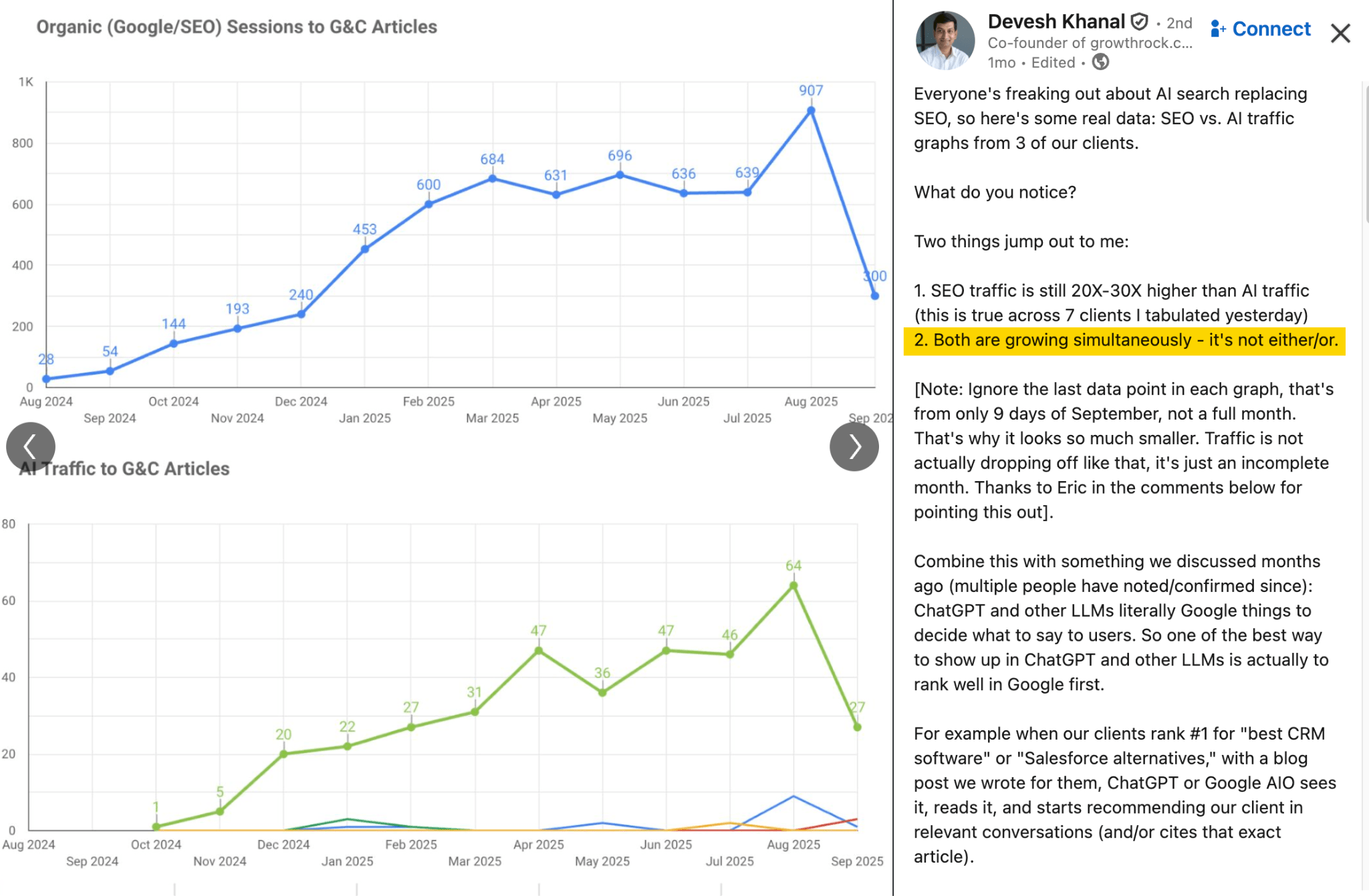
This shift reminds us that GEO is still taking shape — and those who stay curious, test often, and adapt early will be the ones to benefit most as it evolves.
Further reading
Just look at TikTok’s numbers—Gen Z is using it like a search engine, and many even prefer it over Google.
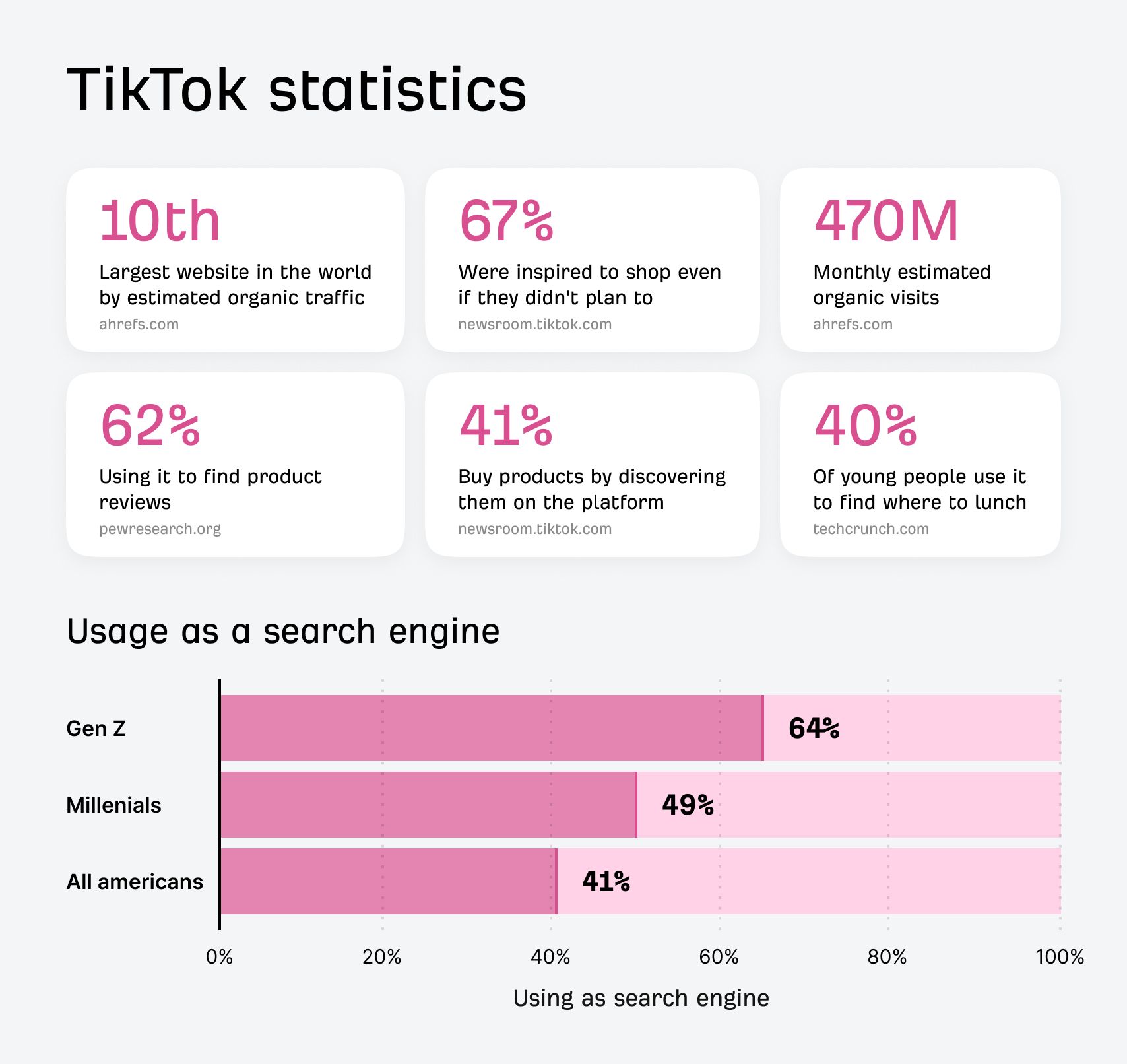
SEO has evolved from a “magic money tap” to a strong channel with new limitations. Sustainable growth now requires multi-channel resilience rather than Google dependency.

It’s a toothpaste-out-of-the-tube moment. The shift has happened, and there’s no putting it back. I think that in a few years, no one will care that AI was used to create content—it’ll be as normal as cars being built by robots.
Sure, maybe one day AI will replace some jobs. But right now, the real risk is not using it and falling behind those who do.
The key is to lean into your human strengths—insight, strategy, creativity, unique human experience—and let AI handle the repetitive parts. That’s how you make yourself harder to replace by AI.
One of the most valuable uses of AI in SEO today is content optimization. Tools like Ahrefs’ AI Content Helper can dramatically reduce the time it takes to identify search intent, find topical gaps, and compare your coverage against competitors.
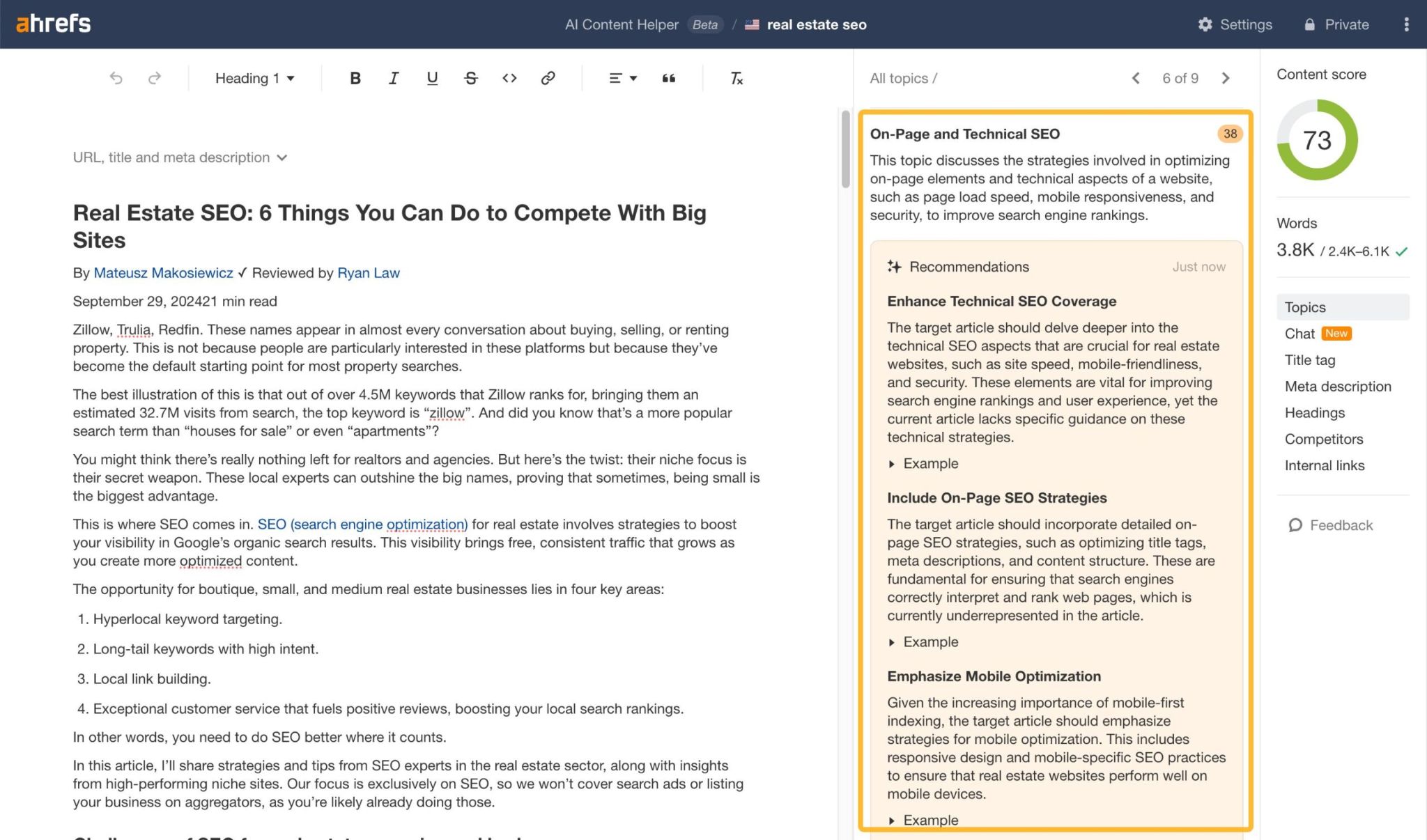
Check out how my colleague Louise used that AI tool to boost traffic by 72%.
At Ahrefs, we see this in action every day. My colleague Louise regularly breaks news about AI Search—almost every week—and her work is talked about, cited, linked and shared throughout the industry. That’s what real, authentic expertise looks like.
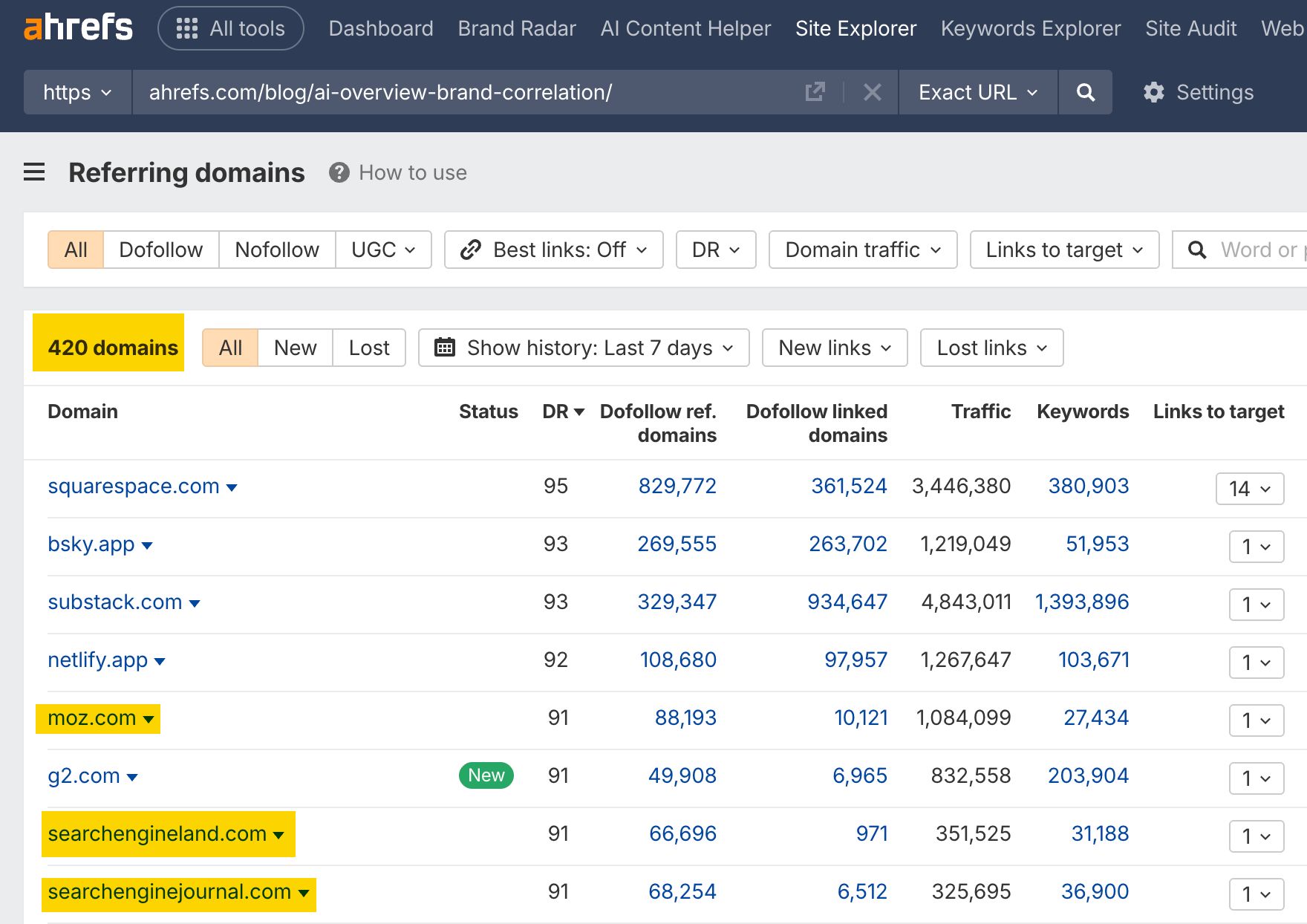
- Finding good keywords for your blog that you haven’t targeted yet.
- Research international SEO expansion opportunities.
- Discover the top-ranking sites across any group of keywords.
- Get an idea of any unique, non-standard approaches to content from your competitors.

MCPs represent a shift from AI as assistant (helping you write after you do the research) to AI as analyst (doing the research, spotting the opportunities, and then helping you execute). For SEO, where data analysis is often the bottleneck between insight and action, this can change how SEO tools work forever.
Further reading
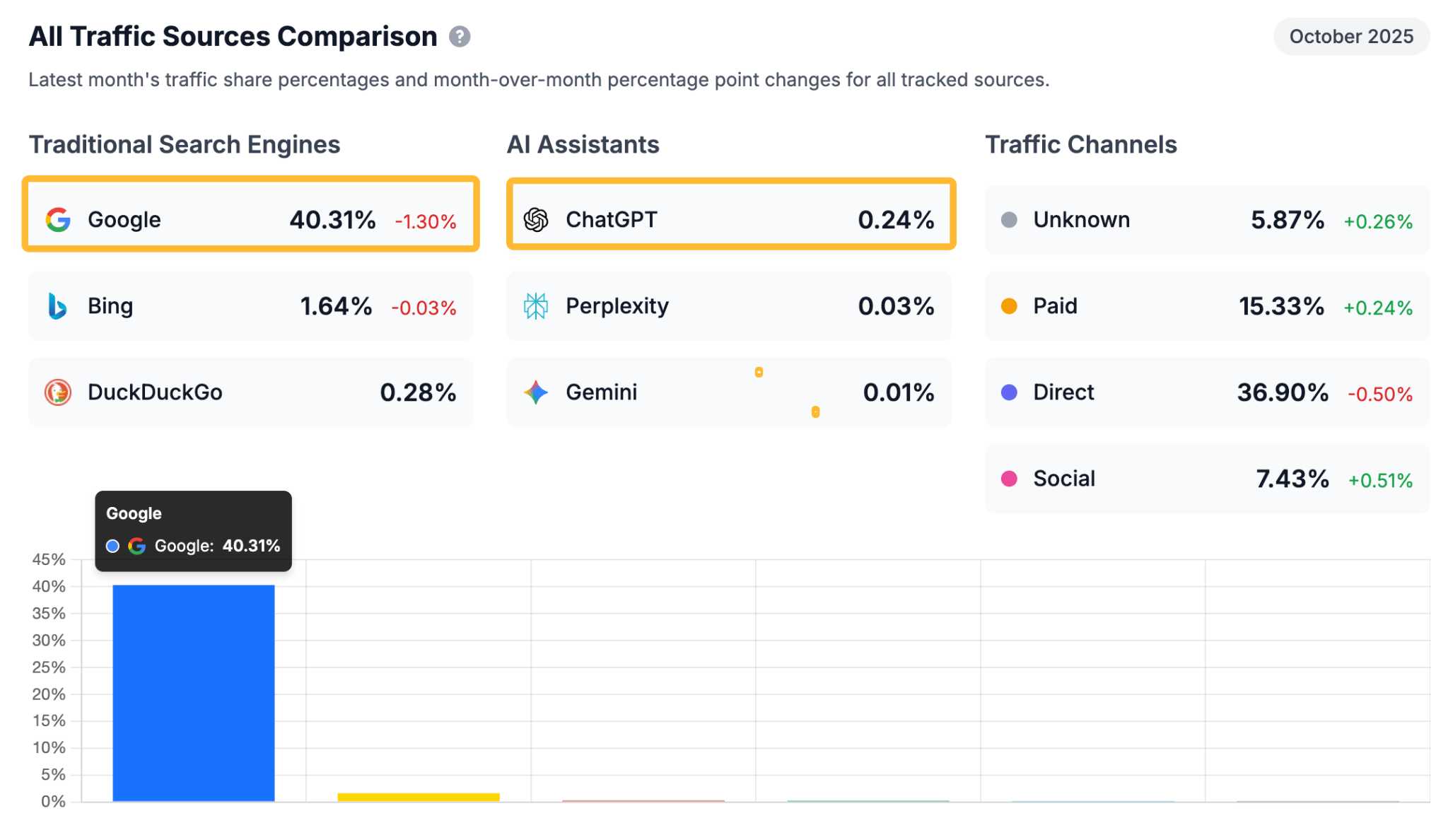
- Branded web mentions. The instances of the brand being mentioned on any page on the web (linked and unlinked).
- Branded anchors. The anchor texts in the links pointing to a website.
- Branded search volume. Search volume of keywords that include a brand.
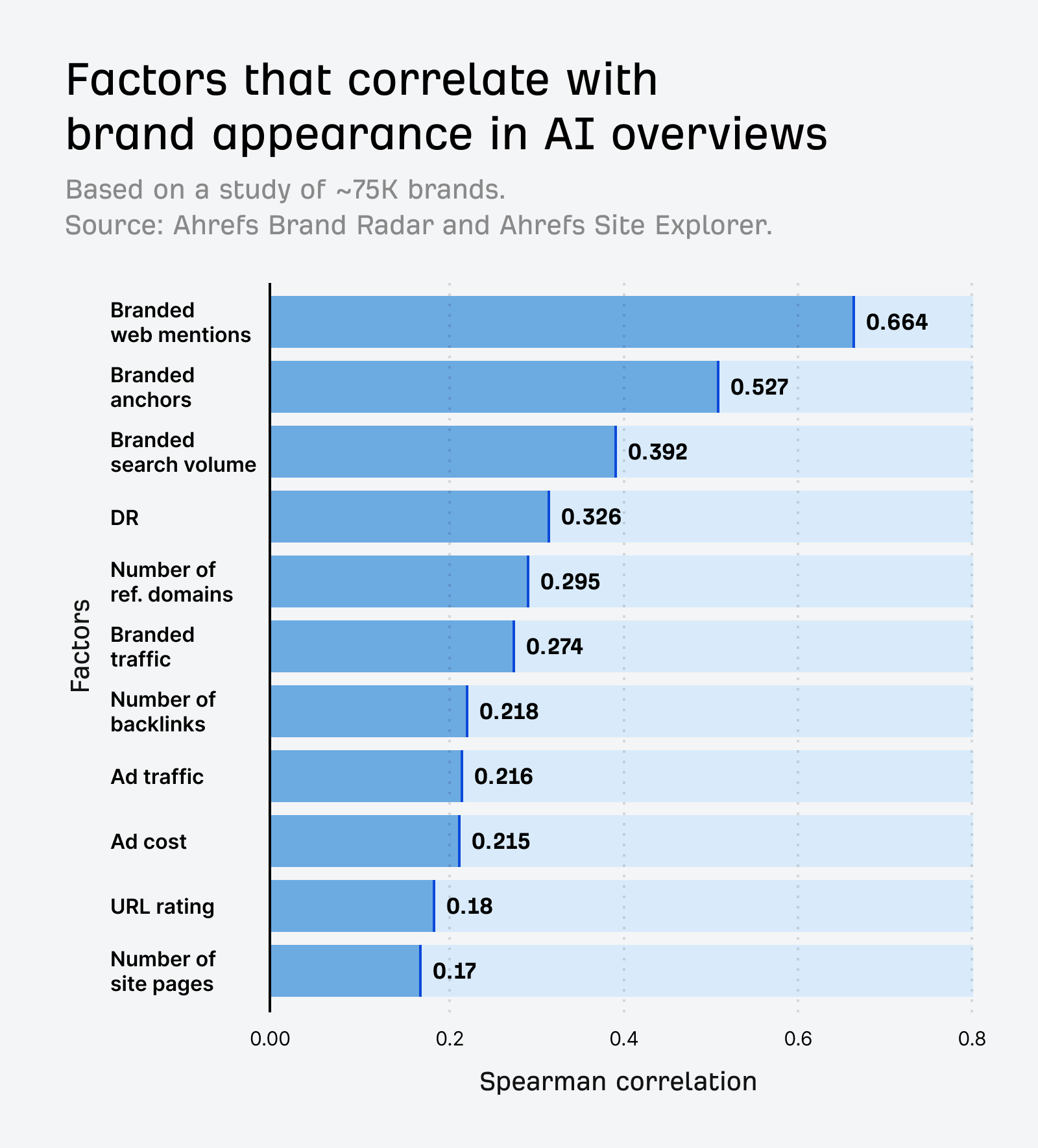
The takeaway is that building brand authority remains as important as ever, perhaps even more so in an AI-driven search landscape where trust signals matter tremendously.
Final thoughts
The good news? You don’t have to start over. Strong brands, high-quality content, and solid SEO fundamentals still win. What’s changing is where that visibility appears and how you measure success.
Right now, there’s still an early-mover advantage. Most brands haven’t begun optimizing for AI visibility, so those who start experimenting, learning, and building authority today will be ahead when everyone else catches on.
Got questions or comments? Let me know on LinkedIn.
Similar Posts
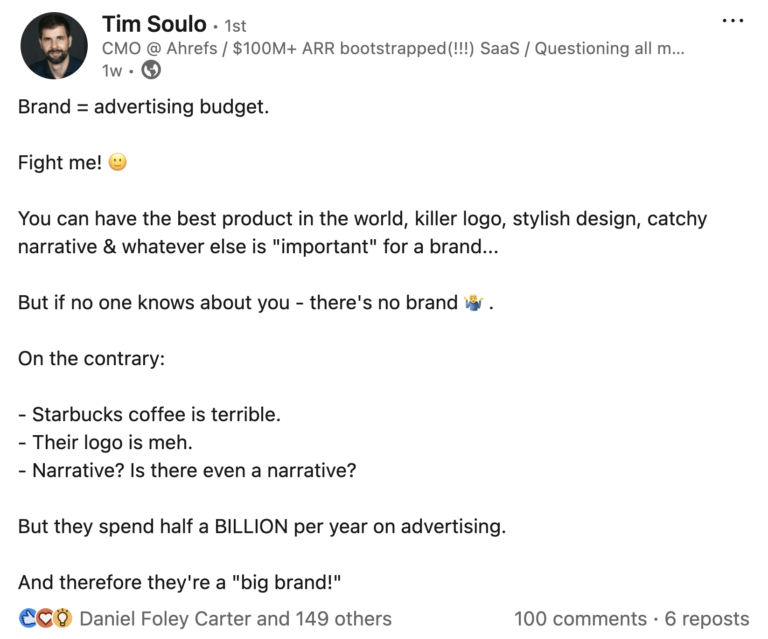
How to Measure Brand Awareness in 2025 (AKA the Year of the Brand)
Brand awareness is one of the “fuzziest” growth channels. And when things get fuzzy, you need concrete ways to prove your time and investment is paying off. Below I’ve laid out 11 workflows you can follow to measure the success of your brand awareness—including some little-known Ahrefs use cases. Tim Soulo on LinkedIn There’s no right…

Digital Marketing Analytics Made Simple With This Free AI Tool
Digital marketing analytics helps you understand which of your marketing tactics work and which don’t. The more you know about the effects of your efforts, the better you can allocate your time and budget. Basic digital marketing analytics is easier than it sounds and provides enough information to evaluate your performance, create reports, and plan…

An Insider’s Guide to Event Sponsorships (From a Company That Spent $500K)
The secret weapon behind a successful event isn’t just great speakers, a cool venue, or sold-out tickets. It’s also the sponsors who bring in important revenue while adding credibility to your event. When big-name sponsors put their logo on your event materials, they’re essentially saying: “This event matters.” We know this firsthand because event sponsorships have…
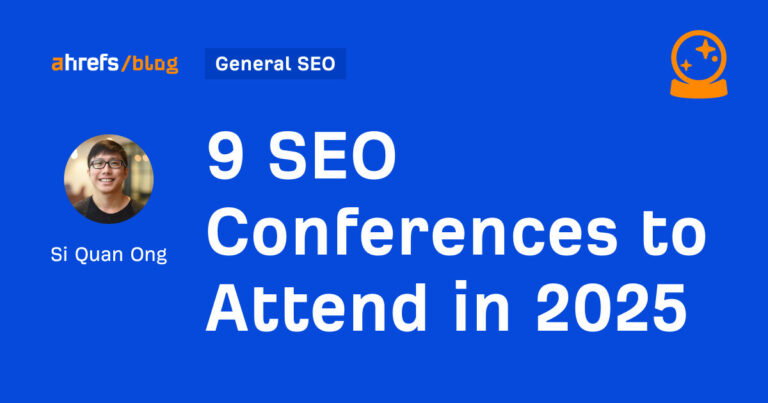
9 SEO Conferences to Attend in 2025
We’ve attended dozens of SEO conferences and found some standout events that consistently deliver value, insight, and real connections. Here are the ones we think are worth attending in 2025. Conference When Location BrightonSEO, US Sep. 23 & 24, 2025 San Diego, USA WTSFest Philadelphia Oct. 7, 2025 Philadelphia, USA Ahrefs Evolve ⭐️ Oct. 14 & 15, 2025 San…

ChatGPT May Scrape Google, but the Results Don’t Match
We know that AI assistants like ChatGPT access search indices, like Google and Bing, to retrieve URLs for their response. But how, exactly? To find out, we’ve run a series of experiments looking at the relationship between the URLs cited by AI assistants, and the results found in Google when searching for the same topics….

Why .store Is the Perfect Domain Extension for Your Online Shop
In the vast, ever-evolving eCommerce landscape, filled to the brim with new digital marketplaces, standing out is vital for online shop owners. And you shouldn’t underestimate the impact your top-level domain can have on your brand’s online presence. Over the last 12 months, the .store registry commissioned Contrast Digital to run a TLD experiment to…
